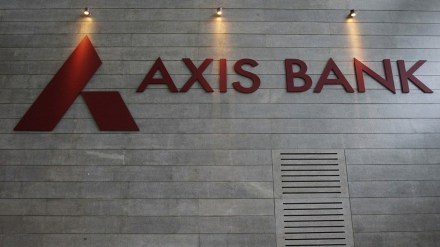One in three of the country’s richest Indians today is a customer with Axis Bank. Indeed, the lender’s initiative to ramp up its wealth management platform is paying off. A big part of that strategy—the acquisition of Citibank India’s retail business, branches and all— for a cash consideration of Rupees 12,300 crore, is shaping up well.
It’s a good business to own. The average spend on Citi’s cards may have been coming down but, at Rupees 14,000, it was above the industry average of Rupees 12,000. There were concerns Citi customers might be unhappy with the more mid-market Axis brand. But nearly nine months into the merger, ‘most” customers have stayed on and the management says attrition has been “far lower” than it was before the integration process began.
The big reason why customers aren’t going elsewhere is because Axis is offering them a strong and more powerful proposition, said Arjun Chowdhry, group executive and head, cards, payments and wealth, Axis Bank, who is steering the transition. Chowdhry is convinced that while the Citi brand had great value and its own positioning, ultimately customers demonstrate behavior depending on the value proposition of the card. “I believe everyone will stay back,” he asserts.
The bigger bouquet of products and services that Axis is offering customers seems to be helping. To start with, the disruption to Citi customers has been minimized by leaving the customer-facing teams intact. These teams from Citi will be integrated into the Axis team over a period of time.
“The experience is unchanged as are the platforms,” explains Chowdhry. Citi card customers aren’t missing out on rewards or benefits. Axis has either tweaked its products or designed new ones to cater for Citi customers. For instance it has created an equivalent of the Citi “Rewards” card retaining the benefits of the 15% discount with no caps. The partnership that Citi had with the duty shops across India, has been taken over, so that customers continue to enjoy the same benefits. In addition, Axis has re-introduced for Citi customers the discounts for Flipkart’s Big Billion Day sale, which had been discontinued by the foreign bank. “We have seen our share of credit cards growing both in terms of spends and cards in force and we see the momentum building,” said Chowdhry.
The cross-selling to acquired customers is also turning out to be better than expected. Citi customers are being sold a suite of new products such as alternate investment funds, new mutual funds, portfolio management services and so on. “Citi had a strong wealth management business but it was more narrowly defined. In 8 months we have brought to customers Rupees 1,400 crore worth of products,” Chowdhry said. In a presentation last week, the management said the integration is broadly tracking internal estimates. Analysts say the wealth management piece is growing and the “strength is visible in the Burgundy platform”.
The brokerage services from Axis Securities to Citi clients are growing much faster than expected. Citi customers are also being offered services relating to salary accounts, beyond the eight cities. “On financial metrics, we are running a little ahead of the aggregate number for FY24 that we had presented to the board,” Chowdhry said.
The management claims the lender is on track to realise the synergies it had pencilled in at the time of the acquisition in March. The financial metrics and numbers, it says, are running slightly ahead of the targets that it had set. Moreover, it has over the past few months, expanded the areas from which synergies can be extracted to as many as 70; earlier the plan was to tap 60 spaces.
Another benefit from the Citi acquisition is the boost to Axis Bank’s deposits. The liability franchise hadn’t been growing at the desired levels but the Citi business with its three million customers is helping Axis scale up its liabilities faster. Analysts believe that once the technology platforms are fully integrated, which is scheduled to happen sometime in H1FY25, the pace could pick up further.
Post Axis Bank’s Q2FY24 earnings announcement, analysts at Kotak Institutional Equities had observed that Citi’s integration has turned out to be less worrying, especially the integration of human resources. “The financial costs that are pending to be recognised are less worrying as well,” MB Mahesh and Nischint Chawathe had written.
That things are going according to plan with the integration is creditable. With the first few months of the process having gone through smoothly and attrition under control, Axis seems well on course to deliver on expectations in terms of the financial efficiencies.
When the Citi deal —which came with a portfolio of Rupees 27,400 crore, comprising largely credit cards, mortgages and other retail products—was done, Suresh Ganapathy of Macquarie had observed the business would be RoA–accretive and could deliver a 1.6% steady-state RoA (return on assets). What will help is Axis Bank’s ability to leverage the Citi customer base for a host of loan products such as asset-backed finance and mortgages.
It’s early days yet and the market is competitive but Axis seems to have got off to a good start.
